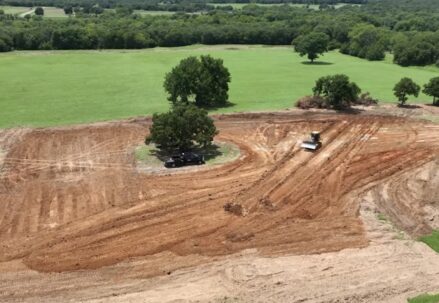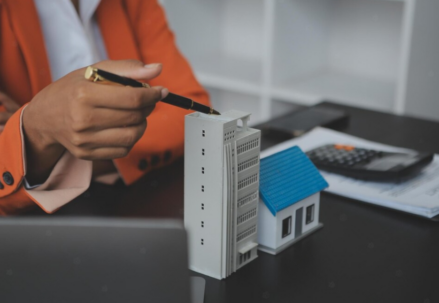Should you be an entrepreneur, you are undoubtedly aware of the paramount importance entailed in discovering an appropriate establishment for your enterprise. But consider a scenario where your requisites remain unmet; this is precisely where the concept of tailor-made commercial properties, known as “build-to-suit,” enters the stage. Embracing this form of development empowers companies to meticulously fashion their very own commercial haven, meticulously aligned with their unique exigencies in the realm of real estate.
Embark on this reading journey to delve deeper into the nuances of the build-to-suit phenomenon and unearth the compelling reasons that might propel you towards its adoption!
What Exactly Is a Build to Suit Lease?
The concept of Build to Suit, commonly abbreviated as BTS, pertains to a distinctive approach in real estate development. In this arrangement, a property is meticulously crafted and constructed to precisely align with the explicit prerequisites and desires of an individual tenant or proprietor.
Diverging from the conventional trajectory of real estate development, where structures are erected speculatively in the absence of a confirmed lessee, the build-to-suit ventures pivot around the precise demands of a particular enterprise or individual entity.
In this scenario, the developer’s objective isn’t centered on erecting a property for outright sale. Instead, the edifice is meticulously designed and executed with the explicit intention of being leased out to a previously designated tenant.
A Build to Suit lease embodies a customary agreement of the build-to-suit genre, wherein the developer shoulders the entire financial burden of the property’s creation, alongside bearing the brunt of major structural maintenance on the premises.
This lease model is particularly embraced by corporations that harbor distinct facility prerequisites and are in pursuit of a purpose-built resolution. The build-to-lease arrangement yields advantages for both the tenant and the landlord. On one hand, it grants the lessee the opportunity to occupy a tailor-made establishment that impeccably aligns with their specific exigencies. On the other hand, it affords the landlord the prospect of leasing out an unparalleled and personalized asset.
Built-to-Suit Lease: An In-depth Look
Understanding Built-to-Suit Lease Mechanism:
Built-to-suit leases, often abbreviated as BTS leases, are specialized agreements where a landlord constructs a property tailored to the tenant’s specifications. Typically, tenants enter into long-term contracts, often ranging from 10 to 20 years, with provisions for extending the lease period. A distinctive feature of many built-to-suit properties is that they are standalone structures primarily catering to a single tenant, optimizing their operational requirements.
Financial Responsibilities in a BTS Lease:
One of the key features of a BTS lease is its double-net nature. Under this lease structure, the tenant is responsible for a significant portion of the property’s expenses. This often includes property taxes, insurance premiums, and most of the repair costs during the lease’s tenure. The initial stage of a BTS lease often involves tenants actively participating in site selection, frequently in collaboration with architects and urban planners, to ensure the chosen location meets their specific business needs.
Insights into the Design and Build Process of a Built-to-Suit Development
Tailored Construction Process:
In the world of custom construction, the tenant enjoys extensive creative latitude. Given that the property is primarily crafted for a single user, every facet, from structural integrity to aesthetic appeal, can be fine-tuned to meet the tenant’s vision. Throughout the design phase, tenants engage collaboratively with a skilled team comprising general contractors, civil engineers, architects, and developers.
Role of the Development Team:
The developer or development team often dons the hat of a project manager, ensuring a seamless transition of the tenant’s vision into reality. They guide the tenants through each phase, from initial planning to the eventual handover, ensuring timelines are met, and quality is maintained.
Influence of Real Estate Trends:
While tenants have a significant say in the design and construction, prevailing real estate trends and market dynamics can impact the final outcome. If a certain design feature or construction technique becomes the market norm or is highly sought after, tenants need to evaluate its relevance to their project. They must then make an informed decision about its incorporation. It’s essential for tenants to maintain a balance between their individual design vision and market influences. It’s rare for a project to be halted due to a singular design choice. Instead, open dialogues, negotiations, and mutual compromises usually take center stage, ensuring that the project advances without undermining its core design philosophy.
The Nuances of “Build to Suit” Commercial Buildings and Their Relevance to Your Business
Current Market Dynamics
In numerous industries, a surge in product demand is evident. Yet, this increased demand comes with a caveat – a sharp hike in construction costs. One can attribute this rise to various reasons, including material shortages and unforeseen delays in the supply chain. Simultaneously, many markets are witnessing escalating rents, with the added cost burden being shifted onto tenants. This results in fewer affordable leasing options and increased rental rates in areas already experiencing rental inflation. For developers, this scenario signifies shrinking returns on land even as the thirst for rented spaces grows. This set of intertwined factors poses challenges for markets to operate efficiently.
Is “Build to Suit” the Answer?
For developers wary of investing more in spaces than the neighborhood’s average rate, or tenants seeking an economical yet high-quality build that aligns with their brand, “Build to Suit” (BTS) may be the perfect antidote. This approach is tailored primarily for entities with unique commercial space prerequisites, empowering them with greater control over their property. However, a word of caution: BTS isn’t a universal solution. To ascertain if BTS aligns with your objectives, seeking expert counsel from commercial real estate specialists is recommended.
Demystifying the BTS Process
The journey of a BTS project can be elucidated through the following detailed stages:
- Understanding Requirements: This foundational step mandates a thorough understanding of the tenant or owner’s unique needs. It encompasses multiple aspects, such as the envisaged location, desired space dimensions, specific layout, and any additional features for the property;
- Choosing the Right Site: With the requirements laid out, the quest for the perfect site commences. This phase is guided by several considerations, including the site’s accessibility, compatibility with zoning laws, and its proximity to essential amenities and infrastructure;
- Designing with Precision: Post site finalization, the creative phase kicks in. Professionals, including architects and engineers, liaise with the primary stakeholders (tenant/owner) to sculpt a design that perfectly mirrors their vision and functional requirements;
- Regulatory Approvals: A BTS project must be in strict alignment with local laws and regulations. Therefore, securing necessary permits and nods from local governing bodies is paramount. This step ensures that the project is compliant with all local building norms and codes;
- The Construction Phase: With all clearances in hand, the construction phase commences. Under the watchful eye of an adept general contractor, the project begins to take shape, ensuring adherence to the proposed timeline and standards;
- Completion and Handover: The culmination of the BTS journey is the handover of the property, post-construction. The project’s success hinges on whether the new property aligns seamlessly with the envisioned specifications and goals.
Benefits of Build-to-Suit Commercial Property Leases
1. Tailored to Tenant Needs:
Build-to-suit commercial property leases are unique in that they are designed with the specific requirements of the tenant in mind. Instead of adjusting to a pre-existing space, tenants have the opportunity to occupy a property that perfectly aligns with their business needs.
2. Financial Efficiency:
One of the compelling advantages is that tenants can enjoy the perks of occupying a new and custom-designed space without making a hefty upfront investment. This allows businesses to allocate funds to other essential aspects of their operations.
3. Tax Advantages for Property Owners:
From a property owner’s perspective, build-to-suit leases can be financially attractive. These arrangements often result in potential tax savings as property owners can sidestep capital gains taxes, leading to reduced overall expenses.
Drawbacks of Build-to-Suit Leases
1. Variable Application Costs:
The financial outlay associated with a build-to-suit lease can fluctuate depending on the business’s specific operational needs. This can sometimes result in unforeseen expenses, complicating budgeting processes.
2. Maintenance and Repairs Responsibility:
While occupying a custom space tailored to their needs, business owners often bear the responsibility of keeping the property in pristine condition. This includes addressing any wear and tear and conducting necessary repairs, which can be both time-consuming and costly.
3. Longer Commitment Period:
One of the most significant distinctions of build-to-suit leases compared to other leasing arrangements is their extended duration. Such leases tend to have longer terms, potentially limiting the flexibility of businesses. If a company’s requirements or market dynamics change, they might find themselves bound to a location that no longer serves their best interests. This prolonged commitment can pose challenges in a rapidly evolving business landscape.
What Constitutes a Reverse Build-To-Suit?
A reverse build-to-suit pertains to the possibility of a tenant terminating a build-to-suit lease prematurely. In such an instance, the tenant restores the property to its original state and relinquishes the obligation of rent payment and commercial property upkeep.
The alternative of reverse build-to-suit finds its place within BTS leases primarily as an exit strategy for tenants in the event of shifting business requirements.

Nevertheless, opting for the reverse build-to-suit avenue can potentially impose a substantial financial burden on the tenant, as they might incur expenses for any property damage that transpired during the course of their lease term.
What Exactly Constitutes a Built-To-Suit Residential Dwelling?
Well, let me elucidate. A built-to-suit residential property embodies a distinctive approach to home construction. In this innovative process, a skilled builder undertakes the task of crafting a personalized abode, meticulously tailored to harmonize with the precise requisites and predilections of the homeowner.
Diverging from the conventional paradigms of homebuilding, this method forges an intimate collaboration between the builder and the homeowner. The objective? To conjure a domicile that seamlessly aligns with the homeowner’s distinct desires. This intricate journey encompasses the conceptualization of an optimal floor plan, the curation of exquisite finishes, and the seamless integration of bespoke features that serve as the embodiment of the homeowner’s vision.
What distinguishes build-to-suit residential construction from its traditional counterpart? It bestows upon homeowners the luxury of inhabiting a dwelling that is not a mere structure, but rather a living canvas imbued with their lifestyle and prerequisites. Gone are the days of compromising spatial dimensions, functional nuances, or aesthetic aesthetics. Instead, this avant-garde method empowers homeowners with an untrammeled scope to engender a habitat perfectly attuned to their idiosyncratic needs.
The realm of possibilities expands further when compared to the alternative of acquiring an existing residence. The prospective homeowner possesses the autonomy to handpick the very location upon which their dreams will be actualized, determine the dimensions that will encapsulate their aspirations, and choreograph the layout that will orchestrate their daily life.
What Sets a Build-To-Suit Arrangement Apart From a Sale-Leaseback?
Sale-leaseback arrangements are frequently embraced by proprietors seeking to unlock the capital ensnared within their real estate assets. Conversely, a build-to-suit interaction unfolds as the lessee secures a long-term occupancy of the premises over an established span, often a decade.
Upon the lease’s culmination, a spectrum of options unfurls for the lessee: acquisition of the property might be on the horizon, lease renewal stands as an alternative, or the choice to relocate prevails.
Primarily, a build-to-suit development engagement materializes when a corporation necessitates a tailor-made establishment to accommodate its operational demands. To illustrate, a manufacturing enterprise might undertake the construction of a plant tailored meticulously to its exact requisites. However, the fiscal means to outright procure the property elude them.
Conclusion
A build-to-suit development lease embodies an arrangement wherein the developer undertakes the financial responsibility for the entire expanse of the property, coupled with the substantial task of addressing major structural refurbishments essential for the property’s integrity.
This form of lease holds potential advantages when viewed from the perspective of the lessee. Nonetheless, it does carry along certain drawbacks that warrant careful contemplation prior to embarking upon this contractual commitment.




